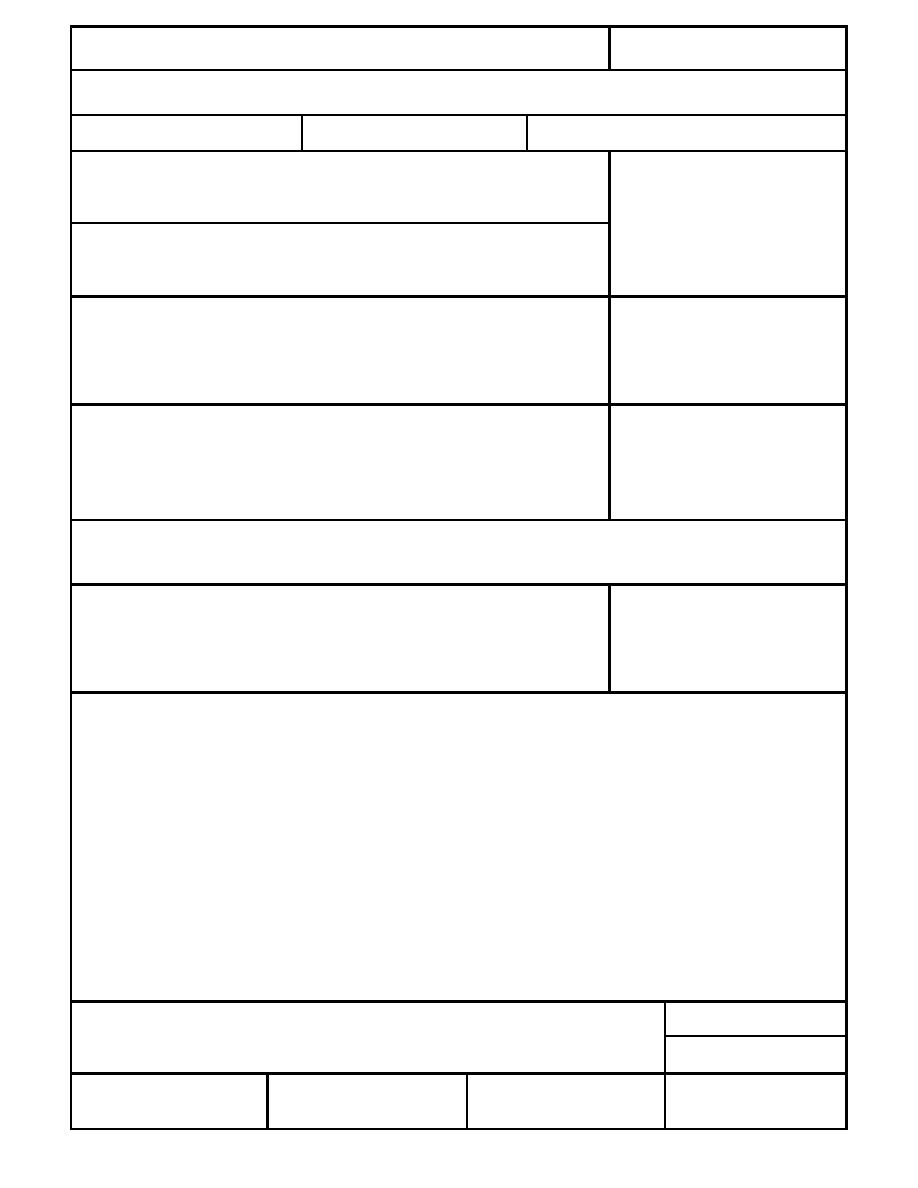
Form Approved
REPORT DOCUMENTATION PAGE
OMB No. 0704-0188
Public reporting burden for this collection of information is estimated to average 1 hour per response, including the time for reviewing instructions, searching existing data sources, gathering and
maintaining the data needed, and completing and reviewing the collection of information. Send comments regarding this burden estimate or any other aspect of this collection of information,
including suggestion for reducing this burden, to Washington Headquarters Services, Directorate for Information Operations and Reports, 1215 Jefferson Davis Highway, Suite 1204, Arlington,
VA 22202-4302, and to the Office of Management and Budget, Paperwork Reduction Project (0704-0188), Washington, DC 20503.
1. AGENCY USE ONLY (Leave blank)
2. REPORT DATE
3. REPORT TYPE AND DATES COVERED
February 1999
4. TITLE AND SUBTITLE
5. FUNDING NUMBERS
Rapid Stabilization of Thawing Soils for Enhanced Vehicle Mobility:
A Field Demonstration Project
6. AUTHORS
Maureen A. Kestler, Sally A. Shoop, Karen S. Henry, Jeffrey A. Stark, and
Rosa T. Affleck
7. PERFORMING ORGANIZATION NAME(S) AND ADDRESS(ES)
8. PERFORMING ORGANIZATION
REPORT NUMBER
U.S. Army Cold Regions Research and Engineering Laboratory
72 Lyme Road
CRREL Report 99-3
Hanover, New Hampshire 03755-1290
9. SPONSORING/MONITORING AGENCY NAME(S) AND ADDRESS(ES)
10. SPONSORING/MONITORING
AGENCY REPORT NUMBER
Office of the Chief of Engineers
Washington, D.C. 20314-1000
11. SUPPLEMENTARY NOTES
For conversion of SI units to non-SI units of measurement, consult ASTM Standard E380-93, Standard Practice for Use of the
International System of Units, published by the American Society for Testing and Materials, 1916 Race St., Philadelphia, Pa.
19103.
12a. DISTRIBUTION/AVAILABILITY STATEMENT
12b. DISTRIBUTION CODE
Approved for public release; distribution is unlimited.
Available from NTIS, Springfield, Virginia 22161
13. ABSTRACT (Maximum 200 words)
Thawing soil presents a formidable challenge for vehicle operations cross-country and on unsurfaced roads. To
mitigate the problem, a variety of stabilization techniques were evaluated for their suitability for rapid employ-
ment to enhance military vehicle operations. A combination of mechanical stabilization methods including
several lightweight fills, geosynthetics, and tire and wood mats, were constructed and tested during the annual
training exercises of the 229th Engineers of the Wisconsin National Guard during the difficult conditions of
spring thaw. The techniques were evaluated for their expediency, ease of construction, trafficability, and
durability. In general, chunkwood was an excellent replacement for gravel fill in forested area; tree slash (or
other vegetation) was effective but labor intensive; wood mats and pallets were effective and reasonably
durable; tire mats were extremely rugged and effective. A loader or crane was needed to place the large wood
mats, tire mats, and fascines. Geocomposite materials (Geonet) were quickly installed and could withstand
limited traffic (50 passes) without additional cover material. Geosynthetics reduced the amount of cover
material and enhanced placement, effectiveness and removal when used under other materials to spread the
load and keep them from sinking into the mud. All materials were damaged during the severe motion of a tank
cornering except the large, smooth wood mats, but these were slippery on slopes. Results are summarized in a
decision matrix for choosing the best technique depending on site conditions, material and equipment availabil-
ity, and utilization criteria.
14. SUBJECT TERMS
15. NUMBER OF PAGES
78
Expedient roads
Soil stabilization
Thawing soils
16. PRICE CODE
17. SECURITY CLASSIFICATION
18. SECURITY CLASSIFICATION
19. SECURITY CLASSIFICATION
20. LIMITATION OF ABSTRACT
OF REPORT
OF THIS PAGE
OF ABSTRACT
UNCLASSIFIED
UNCLASSIFIED
UNCLASSIFIED
UL
Standard Form 298 (Rev. 2-89)
NSN 7540-01-280-5500
Prescribed by ANSI Std. Z39-18
298-102




 Previous Page
Previous Page
